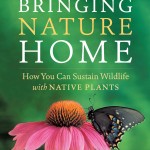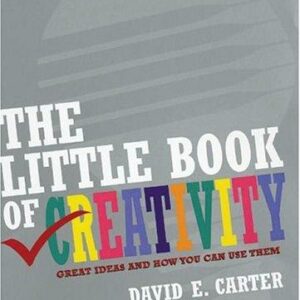Bringing Nature Home
$19.99
| Title | Range | Discount |
|---|---|---|
| Trade Discount | 5 + | 25% |
- Description
- Additional information
Description
“With the twinned calamities of climate change and mass extinction weighing heavier and heavier on my nature-besotted soul, here were concrete, affordable actions that I could take, that anyone could take, to help our wild neighbors thrive in the built human environment. And it all starts with nothing more than a seed. Bringing Nature Home is a miracle: a book that summons butterflies." —Margaret Renkl, The Washington Post
As development and habitat destruction accelerate, there are increasing pressures on wildlife populations. In his groundbreaking book Bringing Nature Home, Douglas W. Tallamy reveals the unbreakable link between native plant species and native wildlife—native insects cannot, or will not, eat alien plants. When native plants disappear, the insects disappear, impoverishing the food source for birds and other animals. Luckily, there is an important and simple step we can all take to help reverse this alarming trend: everyone with access to a patch of earth can make a significant contribution toward sustaining biodiversity by simply choosing native plants. By acting on Douglas Tallamy's practical and achievable recommendations, we can all make a difference.
Doug Tallamy is a professor in the Department of Entomology and Wildlife Ecology at the University of Delaware, where he has authored 97 research publications and has taught insect-related courses for 40 years. Chief among his research goals is to better understand the many ways insects interact with plants and how such interactions determine the diversity of animal communities. Among his awards are the Garden Club of America Margaret Douglas Medal for Conservation and the Tom Dodd, Jr. Award of Excellence, the 2018 AHS B. Y. Morrison Communication Award, and the 2019 Cynthia Westcott Scientific Writing Award. Doug is author of Bringing Nature Home, Nature’s Best Hope, and The Nature of Oaks; and co-founder with Michelle Alfandari of HOMEGROWN NATIONAL PARK®. Learn more at HNPARK.org.
Rick Darke is a landscape design consultant, author, lecturer, and photographer based in Pennsylvania who blends art, ecology, and cultural geography in the creation and conservation of livable landscapes. His projects include scenic byways, public gardens, corporate and collegiate campuses, mixed-use conservation developments, and residential gardens. Darke served on the staff of Longwood Gardens for twenty years and received the Scientific Award of the American Horticultural Society. His work has been featured in the New York Times and on National Public Radio. Darke is recognized as one of the world's experts on grasses and their use in public and private landscapes. For further information visit www.rickdarke.com.
Gardeners enjoy their hobby for many reasons: a love of plants and nature, the satisfaction that comes from beautifying home and community, the pleasures of creative effort, the desire to collect rare or unusual species, and the healthful benefits of exercise and outdoor air. For some people, like my wife and me, there is pleasure in just watching plants grow.
But now, for the first time in its history, gardening has taken on a role that transcends the needs of the gardener. Like it or not, gardeners have become important players in the management of our nation’s wildlife. It is now within the power of individual gardeners to do something that we all dream of doing: to make a difference. In this case, the “difference” will be to the future of biodiversity, to the native plants and animals of North America and the ecosystems that sustain them.
For decades, many horticulture writers have been pleading for a fresh appreciation of our American flora, and for almost as long they have been largely (or entirely) ignored. For several reasons, however, the day of the native ornamental is drawing near; the message is finally beginning to be heard. If I were to ask a random group of gardeners to comment on the importance of native plants in their gardens, they would probably recount several arguments that have been made in recent years in favor of natives over alien ornamentals. They might describe the “sense of place” that is created by using plants that “belong” or the dangers of releasing yet another species of invasive alien to outcompete and smother native vegetation. They might recognize the costly wastefulness of lawns populated with alien grasses that demand high-nitrogen fertilizers, broad-leaf herbicides, and pollution-belching mowers. Or they might mention the imperative of rescuing endangered native plants from extinction. These are all well-documented reasons for the increasing popularity of growing native plants.
Owners of native nurseries are also finding it easier and easier to enumerate the benefits of their offerings. Native plants are well adapted to their particular ecological niche and so are often far less difficult to grow than species from other altitudes, latitudes, and habitats. After all, these plants evolved here and were growing just fine long before we laid our heavy hands on the landscape.
Most compelling to me, however, is the use of native species to create simplified vestiges of the ecosystems that once made this land such a rich source of life for its indigenous peoples and, later, for European colonists and their descendants. That most of our ecosystems are no longer rich is beyond debate, and today, most of the surviving remnants of the native flora that formed them have been finished off by development or invaded by alien plant species. Too many Oak Parks, Hickory Hills, and Fox Hollows—developments named, as the environmentalist Bill McKibben has noted, for the bit of nature they have just extirpated—have been built across the country. Although relatively small, strategically placed and connected patches of completely restored habitats might foster the survival of some of our wildlife, I will describe later why such habitat islands can only protect a tiny fraction of the species that once thrived in North America. With 300 million human souls already present in the United States and no national recognition of the limits of our land’s ability to support additional millions, we simply have not left enough intact habitat for most of our species to avoid extinction. All species need space in order to dodge the extinction bullet. So far we have not shared space very well with our fellow earthlings. In the following pages, I hope to convince you that, for our own good and certainly for the good of other species, we must do better. Native plants will play a disproportionately large role in our success.
The transition from alien ornamentals to native species will require a profound change in our perception of the landscaping value of native ornamentals. Europeans first fell in love with the exotic beauty of plants that evolved on other continents when the great explorers returned home with beautiful species no one had ever seen before. It quickly became fashionable and a signal of wealth and high status to landscape with alien ornamentals that no one else had access to. As the first foreign ornamentals became more common in the landscape, the motivation to seek new alien species increased. Even today, the drive to obtain unique species or cultivars is a primary factor governing how we select plants for our landscapes.
Foreword by Rick Darke
Preface
1. Restoring Natives to Suburbia: A Call to Action
2. The Vital New Role of the Suburban Garden
3. No Place to Hide
4. Who Cares about Biodiversity?
5. Why Can’t Insects Eat Alien Plants?
6. What Is Native and What Is Not?
7. The Costs of Using Alien Ornamentals
8. Creating Balanced Communities
9. Gardening for Insect Diversity
10. Blending In with the Neighbors
11. Making It Happen
12. What Should I Plant?
13. What Does Bird Food Look Like?
14. Answers to Tough Questions
Afterword: The Last Refuge
Appendix 1: Native Plants with Wildlife Value and Desirable Landscaping Attributes by Region
Appendix 2: Host Plants of Butterflies and Showy Moths
Appendix 3: Experimental Evidence
As Doug Tallamy eloquently explains, everyone can welcome more wildlife into their yards just by planting even a few native plants. With fascinating explanations and extensive lists of native plants for regional habitats, this scientifically researched book can help us all to make a difference. No prior training is needed to become a backyard ecologist—but Tallamy's book can be a vital first set. For more information, please visit www.plantnative.com.
“Provides the rationale behind the use of native plants, a concept that has rapidly been gaining momentum. . . . The text makes a case for native plants and animals in a compelling and complete fashion.” —The Washington Post
“This is the ‘it’ book in certain gardening circles. It’s really struck a nerve.” —Philadelphia Inquirer
“Reading this book will give you a new appreciation of the natural world—and how much wild creatures need gardens that mimic the disappearing wild.” —The Minneapolis Star Tribune
“A compelling argument for the use of native plants in gardens and landscapes.” —Landscape Architecture
“An essential guide for anyone interested in increasing biodiversity in the garden.” —American Gardener
“I want to mention how excited I am about reading Bringing Nature Home. . . . I like the writing—enthusiastic and down-to-earth, as it should be.” —Garden Rant
“An informative and engaging account of the ecological interactions between plants and wildlife, this fascinating handbook explains why exotic plants can hinder and confuse native creatures, from birds and bees to larger fauna.” —Seattle Post-Intelligencer
“Tallamy explains eloquently how native plant species depend on native wildlife.” —San Luis Obispo Tribune
“Will persuade all of us to take a look at what is in our own yards with an eye to how we, too, can make a difference. It has already changed me.” —Traverse City Record-Eagle
“Delivers an important message for all gardeners: Choosing native plants fortifies birds and other wildlife and protects them from extinction.” —WildBird Magazine
“There’s an increasing interest among homeowners and others to include more native species in their landscape, thanks to books like Bringing Nature Home, by Doug Tallamy, which extol the virtues of native plants over exotic ornamentals for attracting and sustaining beneficial insects.” —Andover Townsman
“Doug Tallamy weaves an interesting story of how exotic invasive plants affect birds and other components of a healthy forests. It’s a compelling and important story to understand.” —The Bradford Era
Additional information
| Dimensions | 0.81 × 6 × 9 in |
|---|---|
| Imprint | |
| Format | |
| ISBN-13 | |
| ISBN-10 | |
| Author | |
| Audience | |
| BISAC | |
| Subjects | endangered, GAR019000, NAT004000, attract, NAT026000, suburban, pollinators, landscaping, backyard, butterflies, yard, bees, biodiversity, Books, environmental, organic, earth day, ecosystem, sustainable, activities, garden, Ecosystems, environment, conservation, gifts |












